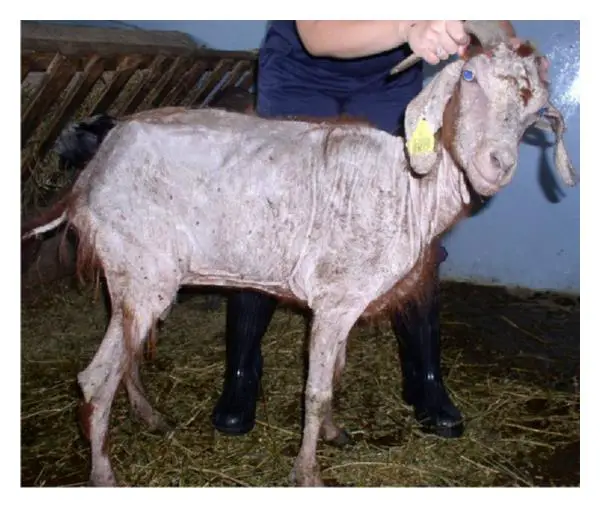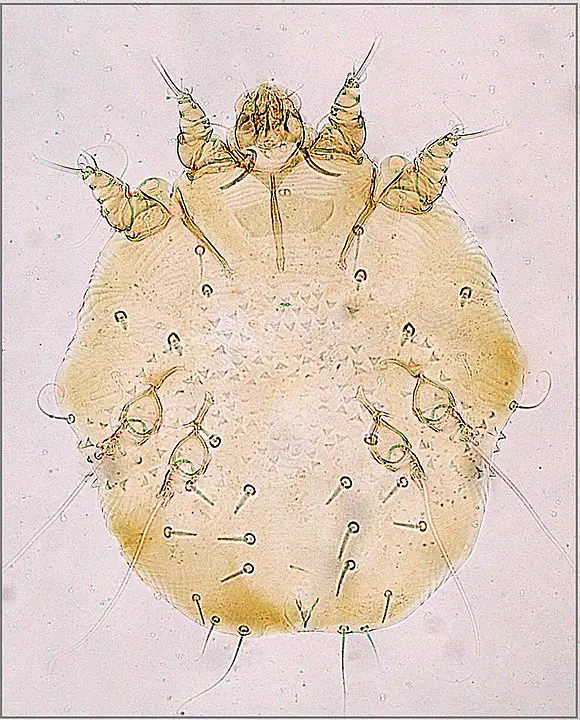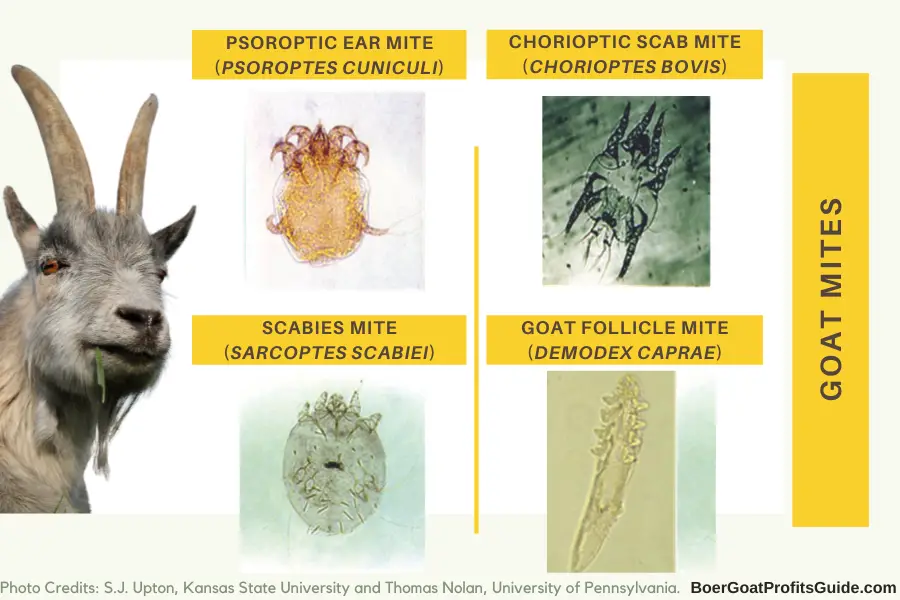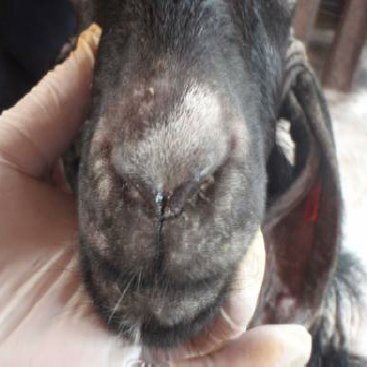
Mites are tiny parasitic insects that can cause serious problems for goats, especially if left untreated. These pests feed on the blood of their hosts and can lead to a number of health issues for the affected animals. In this article, we will explore the various types of mites that can affect goats, the symptoms of mite infestation, and the treatments available for controlling and preventing mite infestations.
Table of contents
What Causes Mites on Goats?
Mites can infect goats for a variety of reasons, including poor living conditions, close contact with infected animals, and a weakened immune system. In many cases, mites are able to thrive and multiply when the living conditions are damp, dark, and crowded, providing an ideal environment for the mites to lay their eggs and feed on the blood of the affected animal.
Poor hygiene and a lack of proper management practices can also contribute to mite infestations in goats. For example, if a goat is not groomed regularly, mites can easily infest its skin and hair, leading to a full-blown infestation. Additionally, if goats are not housed in clean and well-ventilated areas, mites can easily spread from one animal to another, leading to widespread infestations. To prevent mite infestations in goats, it is important to maintain high standards of hygiene and to implement effective management practices that promote the health and well-being of the animals.
What are Mites on Goats?

There are several types of mites that can infect goats, including mange mites, ear mites, and chorioptic mites. Mange mites are the most common type of mite found on goats and can cause severe itching and skin irritation. The mites burrow into the skin and lay their eggs, which can lead to hair loss, open sores, and scabbing. Ear mites are another common type of mite that affects goats, causing itching and inflammation in the ears. Chorioptic mites are similar to mange mites and can cause similar symptoms, including itching and skin irritation.
Symptoms of Mites on Goats
The symptoms of mite infestation can vary depending on the type of mite, but some common signs include itching and scratching, hair loss, open sores, and scabbing. In some cases, the affected animal may also experience difficulty sleeping, loss of appetite, and a general lack of energy.
Mites or Lice
Symptoms of mites are sometimes confused with symptoms from lice. If you can see the insect, it is a louse. Mites are microscopic.
Goat Mites Pictures

Mites on Goats Treatments
The good news is that there are several effective treatments available for controlling and preventing mite infestations in goats. One common approach is to use insecticidal sprays or dips, which can be applied directly to the affected animal. Another option is to use oral medications, such as ivermectin, which can be administered to the goat to kill the mites. In some cases, topical ointments may also be used to treat skin irritation and promote healing.
There are several medications available for the treatment of mites in goats. The choice of medication will depend on the type of mite and the severity of the infestation. Some common medications include:
Ivermectin for Goat Mites
Ivermectin is a broad-spectrum antiparasitic medication that is effective against many types of mites, including sarcoptic mange mites. It works by killing the mites and their larvae and is typically administered as an injection or orally.
Amitraz
Amitraz is an acaricide (a medication that kills mites) that is used to treat mite infestations in goats, including sarcoptic mange. It works by inhibiting the mites’ ability to produce a certain neurotransmitter, leading to paralysis and death. Amitraz is typically administered as a topical treatment, applied directly to the affected area.
Insecticide dips and sprays
Insecticide dips and sprays are topical treatments that can be used to control mite infestations in goats. These treatments typically contain chemicals that kill mites and their larvae and are applied directly to the skin of the goat. Some insecticide dips and sprays are specifically formulated for use in livestock and are effective against a variety of mite species.
Treatment for Mites in Goats
It is important to note that proper diagnosis and identification of the type of mite is essential to ensure the effectiveness of treatment. Some mite species have developed resistance to certain medications, and the wrong treatment can lead to ineffective control of the infestation. In addition, some medications can have side effects and may not be safe for all goats, so it is important to consult with a veterinarian before starting any treatment.
The choice of medication will depend on the type of mite and the severity of the infestation, and a proper diagnosis is essential to ensure the effectiveness of treatment. Be sure to work with your veterinarian for a clear diagnosis and a treatment plan.
Video: How to Treat Mites in Goats
Goat Farmer Katelynn, from Fable Hill Farm in Sand Lake, Michigan, demonstrates in detail in the video below the process that she uses to treat mites in goats. Skip to 5:08 to hear her explain why it is important to do a thorough cleaning if mites are found in your goat herd.
Preventing Mites in Goats
In addition to treating mite infestations, it is important to take steps to prevent future infestations. This may include regularly inspecting the goats for signs of mites, keeping their living areas clean and free of debris, and avoiding close contact with other infected animals. Keeping the goats’ living areas well-ventilated and dry can also help prevent mite infestations.
Can Humans Get Goat Mites?
It is also important to note that mites can be transferred from goats to humans, causing a condition known as zoonotic mange. This condition can cause itching and skin irritation in humans, and can be especially problematic for people who have weakened immune systems or skin conditions.
To prevent the transfer of mites from goats to humans, it is important to take precautions such as wearing gloves and protective clothing when handling infected goats. It is also important to wash your hands thoroughly after handling infected animals and to avoid close contact with the affected goats.
If you do develop symptoms of zoonotic mange, it is important to seek medical attention as soon as possible. Treatment for zoonotic mange typically involves the use of topical creams or ointments, and may also include oral medications in severe cases.

Are Goat Mites Common?
Goat mites can be found in many countries around the world, and the severity of the mite problem can vary depending on various factors such as climate, farming practices, and the presence of effective control measures.
In some regions, such as tropical and subtropical countries, the warm and humid conditions provide an ideal environment for mite populations to flourish. This can lead to a higher incidence of mite infestations in goats in these areas. Additionally, countries with large populations of goats and less stringent farming practices may also experience more significant mite problems. For example, in some parts of Africa and Asia, where goats are an important source of food and income, mite infestations can have a significant impact on the health and productivity of the herds.
It is worth noting that the problem of goat mites is not limited to developing countries and can also be found in developed countries, especially in areas with large goat populations. Effective control measures, such as regular monitoring and treatment, can help to reduce the impact of mites on goat herds and ensure the health and productivity of the animals.
Summary
In summary, while mites can cause serious problems for goats, they can also pose a risk to humans if not properly managed. By taking steps to prevent and treat mite infestations in goats, and by taking precautions to prevent the transfer of mites from goats to humans, goat owners and handlers can help keep both the goats and themselves healthy and free from the discomfort and health issues caused by these pests.
Image Credits
Nektarios D. Giadinis, Rania Farmaki, Nikolaos Papaioannou, Elias Papadopoulos, Harilaos Karatzias, Alexander F. Koutinas, “Moxidectin Efficacy in a Goat Herd with Chronic and Generalized Sarcoptic Mange”, Veterinary Medicine International, vol. 2011, Article ID 476348, 4 pages, 2011. https://doi.org/10.4061/2011/476348
Alan R. Walker, Wikipedia Commons




